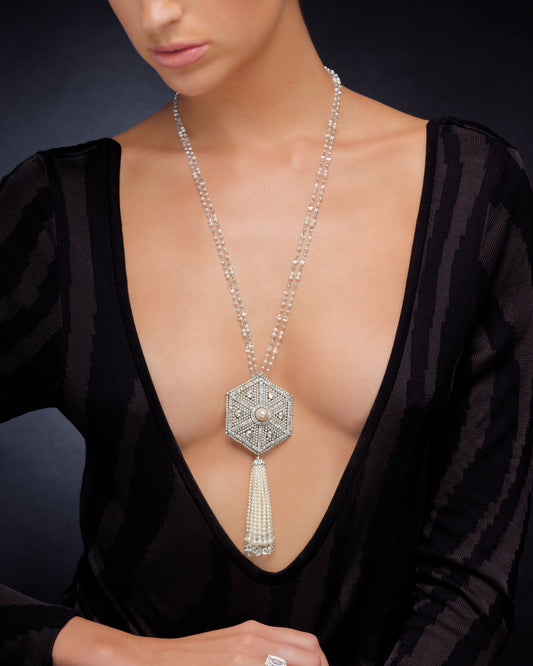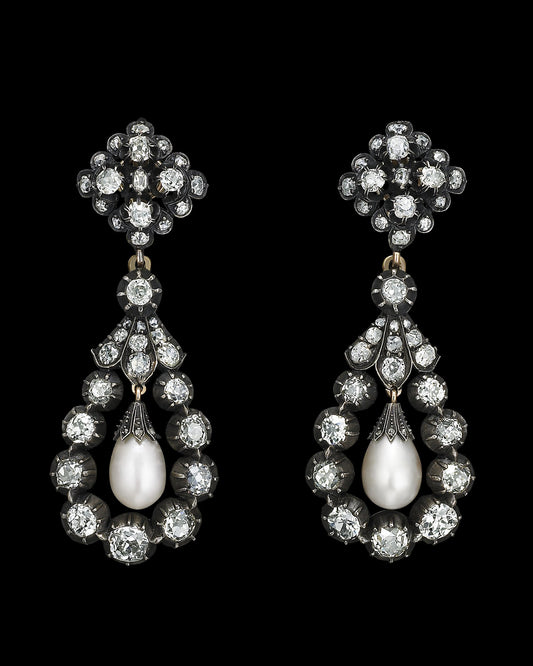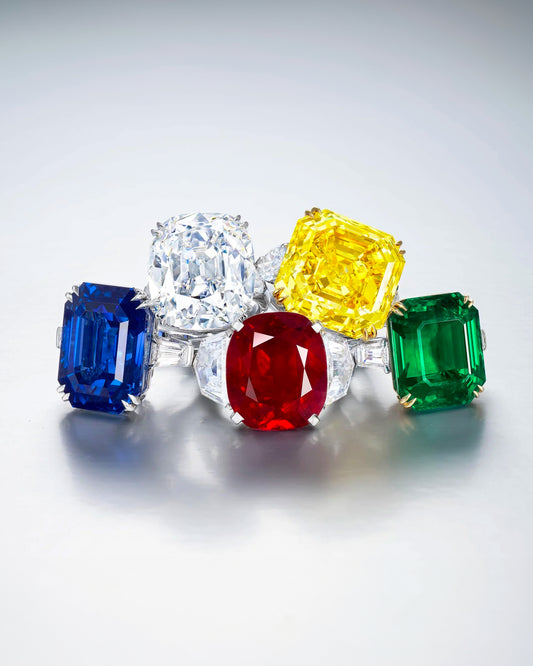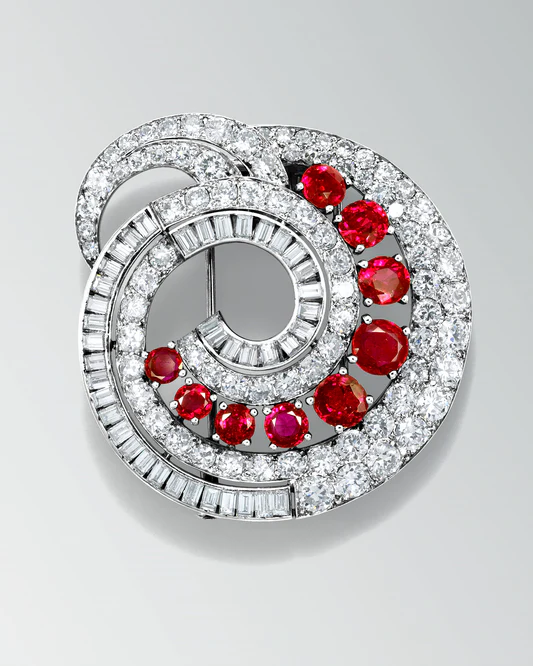
what to consider when looking beyond the 4C's
The art of acquiring a diamond is knowing how to look beyond a gemmological certificate and assess the visual factors that make a diamond both beautiful and desirable. This is what we mean by developing a collector's mindset. If the 4Cs of cut, carat, colour, and clarity are chapter one of the diamond story, the second chapter must be dedicated to how a diamond is cut, and proportioned. As professionals, this is the most important criteria in evaluating a diamond, even more so than the 4Cs as it directly affects a diamond’s appearance and desirability.
What is a well-cut diamond?
Cut refers to the angles, proportions, polish and symmetry of a stone. The way a diamond is cut determines how light enters and exits the stone, which affects its “brilliance” and “fire". A well-cut diamond reflects nearly all the light that enters it through the table (top) and crown (upper half) of the stone resulting in brilliance and fire. Brilliance is the amount of white light reflected from the diamond, and fire refers to the separation of white light into its spectral colors. A poorly cut diamond does not reflect all of the light which enters it. The two main categories of poorly cut diamonds are either shallow diamonds or deep cut diamonds.
*light path shown in blue
The shallow diamonds have shallow crowns and or shallow pavilions (lower half). These stones will exhibit what we call “shadows” or “dark spots”. These poorly cut diamonds will also lack lustre and look dull compared to well-cut diamonds. Deep cut diamonds face the similar issues to the shallow cut diamonds in that they will not reflect all the light as well as appearing smaller than a well-cut diamond making them less desirable. There is a common misconception that a diamond which looks larger than its actual carat weight is more desirable. That is incorrect. A diamond which looks larger than its actual size will be shallow and poorly cut resulting in obvious shadows as well as appearing dull. We advise against acquiring such stones.
Asscher Cut
Good vs Poor Cutting

Good Cut
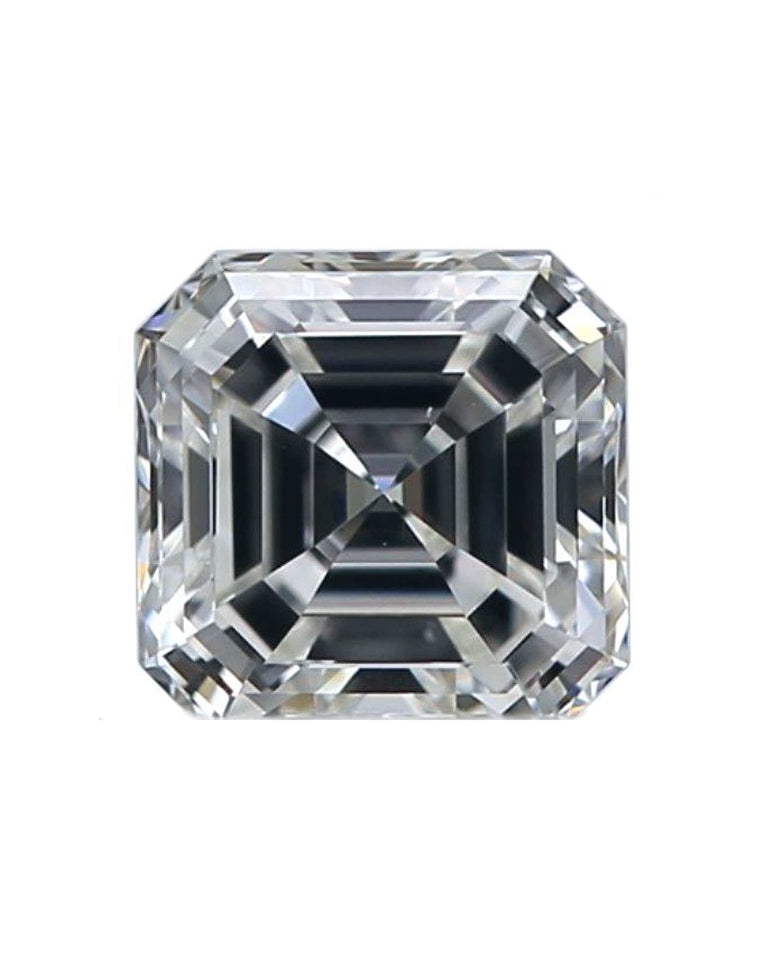
Poor Cut
What are diamond shadows?
Poorly cut diamonds exhibit dark spots or shadows within their facets when viewed face-up. They are caused by inferior proportions and inaccurate facet angles which allows for the leakage of light through the diamond. In these stones the light does not reflect back to the viewer causing these dead spots.
You may think that the presence of these shadows would be noted on a diamond’s gemmological certificate, but that is not the case. Although cut is one of the 4Cs, the cut in the 4Cs generally refers to the shape of the diamond rather than how well it is proportioned. Only the round brilliant cut has a cut grade which is mentioned in the certificate.
Oval Cut
Good vs Poor Cutting
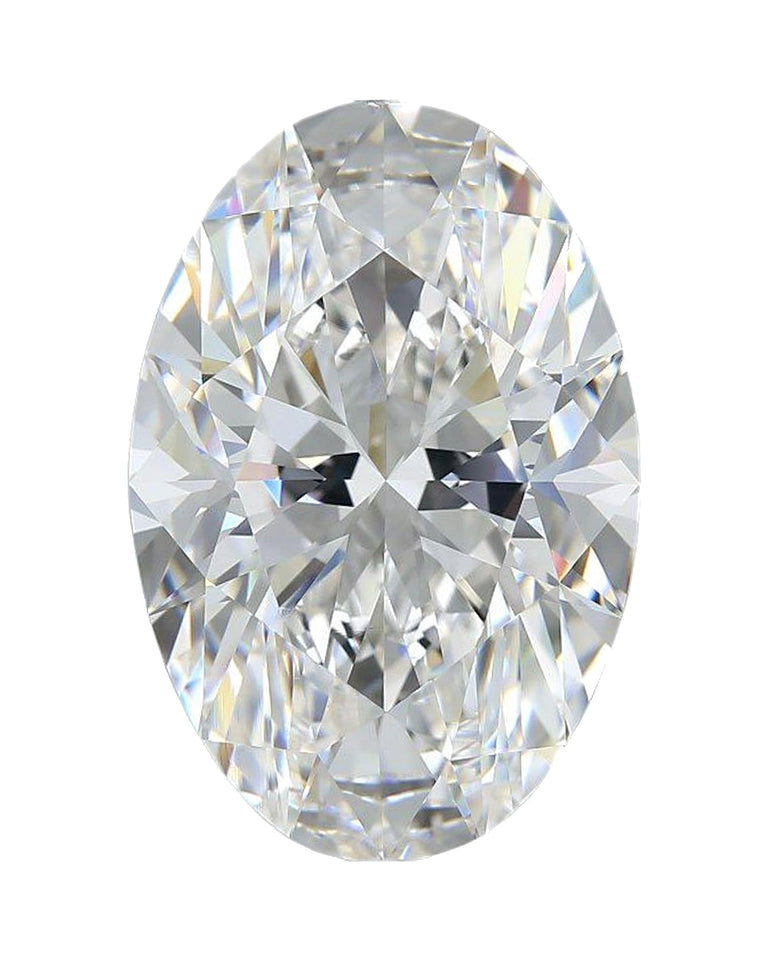
Good Cut

Poor Cut
What is the round brilliant cut’s cut grade?
Round brilliant cut diamonds are feats of geometry. They are the only shape in which the gemmological report lists a cut grade. The cut grade is a system for visually evaluating the appearance of a diamond which is classified as “Poor", “Fair", “Good”, “Very Good” or "Excellent". These determinations are based on seven components – brightness, fire, scintillation, weight ratio, durability, polish and symmetry. However, even within the excellent cut grade, there are stones which are cut to more exacting proportions than others. Therefore, even if two diamonds share the same cut grade, it is possible that one can be more beautiful and valuable than the other. Our multi-generational experience as diamond dealers means we don’t solely rely upon certificates to determine which diamonds we carry in stock. Instead, we compare diamonds visually and select only the liveliest stones with brilliance and fire that are not diminished by any negative attributes.
What should I be aware of as a diamond collector?
A poorly cut diamond can receive a perfect clarity, colour, and even polish and symmetry. Regardless, shadows can occur if just one facet of the stone is a fraction of a millimeter off its ideal angle or misaligned slightly. Similarly, if the balance of a diamond’s table facet and pavilion angle isn’t perfect, light can enter a stone and pass straight through, which means it never returns to your eye. These are all nuanced facts which as professionals we consider when evaluating a diamond. We advise our clients to always look at a diamond carefully before studying its certificate as you are always the best judge of beauty.
How can I be confident when acquiring a diamond?
Your eyes are powerful tools when it comes to selecting a diamond. If you compare two similarly graded stones side by side, one may appear bright and lively, the other less so. You will always be instinctively drawn to the more beautiful diamond. At Ronald Abram, we’ve spent decades nurturing this instinct to build an inventory of diamonds that are the finest examples in their respective categories. Every stone must stand up to visual scrutiny and meet our high standards as experienced diamond dealers. We see our stones as our family investments and this is how we ensure every Ronald Abram jewel is worthy of collection.







